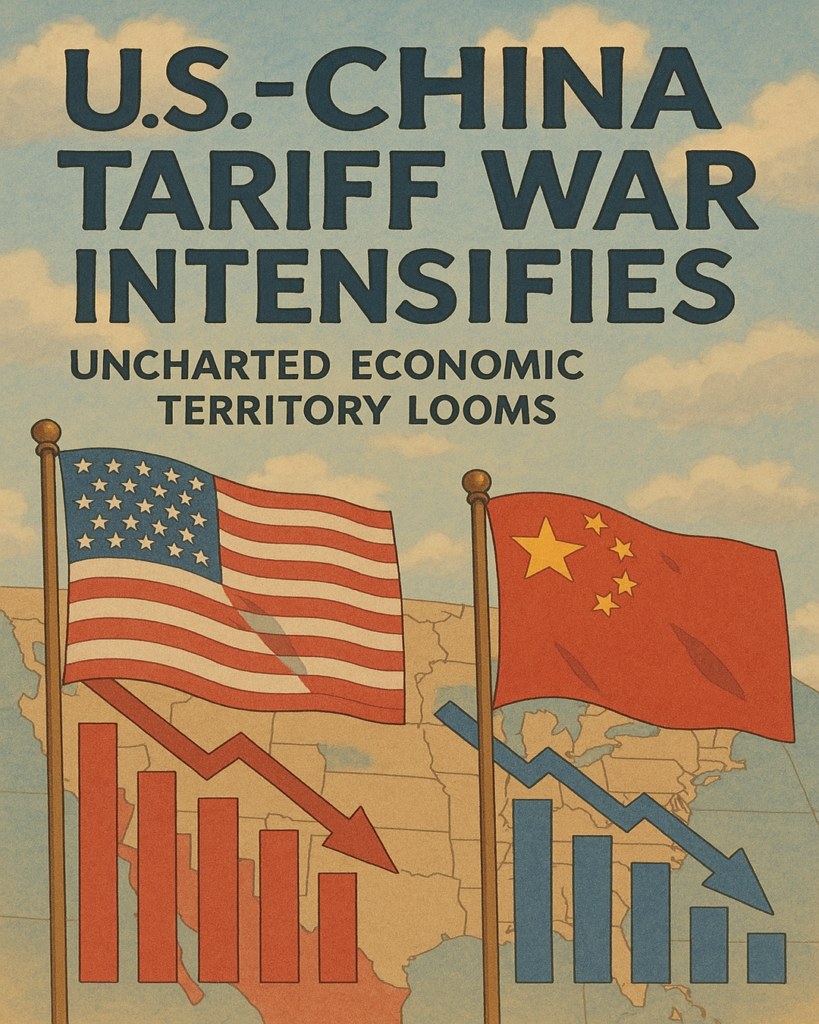Physical Address
18 C Ibbani Harohalli Village
Yelahanka Bengaluru 560064
Physical Address
18 C Ibbani Harohalli Village
Yelahanka Bengaluru 560064

April 11, 2025 – The escalating trade tensions between the United States and China have reached a new crescendo, thrusting the global economy into uncharted waters. As of this week, the U.S. has imposed tariffs on Chinese goods reaching a staggering 145%, a figure that includes a recent 125% hike announced by President Donald Trump, layered atop a pre-existing 20% levy tied to fentanyl-related concerns. In response, China has retaliated with tariffs of up to 84% on American imports, signaling a deepening standoff between the world’s two largest economies.
The latest developments unfolded after Trump’s announcement on April 9 of a 90-day pause on steep tariffs for most countries, a move that briefly buoyed global markets. However, China was conspicuously excluded from this reprieve, prompting Beijing to double down with its own countermeasures. The White House framed the escalation as a strategic push to address trade imbalances, while Chinese officials have vowed to “fight to the end” if pressured further, according to statements reported by state media.
Economic analysts are grappling with the implications of this tit-for-tat escalation. The U.S. Commerce Department has highlighted concerns over Chinese manufacturing practices, including the rerouting of solar panel production through Southeast Asia to evade earlier tariffs. Meanwhile, China’s Foreign Ministry has emphasized its readiness, citing experience from previous trade disputes during Trump’s first term. Yet, the full scope of these measures remains unclear, with little public data on how businesses on either side are adapting—or suffering—in real time.
Markets have reacted with volatility. After a sharp rally on April 9 following the tariff pause, U.S. stocks plummeted by 3.6% in the S&P 500 on April 10, erasing gains as investors weighed the ongoing U.S.-China friction. Gold prices surged to a record $3,177.5 per ounce, reflecting a flight to safety. In China, manufacturers are reportedly exploring price hikes or market exits, particularly on platforms like Amazon, though the extent of these shifts is not fully documented.
Beyond the numbers, the human and industrial toll is emerging as a wildcard. U.S. consumers may face higher prices on a range of goods, from electronics to apparel, as suggested by a recent Reuters/Ipsos poll. In China, the economic slowdown post-COVID-19 could amplify the impact, though Beijing’s efforts to bolster domestic consumption and expand ties with Southeast Asia hint at a strategic pivot. The agricultural sector, a traditional U.S. strength, faces uncertainty, with potential losses in exports like farming equipment to China.
International reactions add another layer of complexity. The European Union has paused retaliatory tariffs, while Canada and Mexico remain exempt from the latest U.S. adjustments under the USMCA framework. Some nations, like India, appear poised to leverage their diversified trade profiles, though the long-term effects remain speculative. The World Trade Organization’s head warned of an 80% drop in U.S.-China goods trade, a scenario that could ripple globally, though such projections hinge on untested assumptions.
As negotiations hang in the balance, both sides have signaled openness to dialogue. Trump has expressed a desire to “work something out” with Chinese President Xi Jinping, while Beijing has called for multilateral cooperation. Yet, with neither side showing immediate signs of backing down, the tariff war’s trajectory remains unpredictable. Economists caution that the lack of transparency around supply chain adjustments and consumer behavior could mask significant disruptions—or unexpected resilience.
For now, the world watches as the U.S. and China navigate this economic chess match. The stakes are high, the outcomes uncertain, and the next move could redefine global trade for years to come.